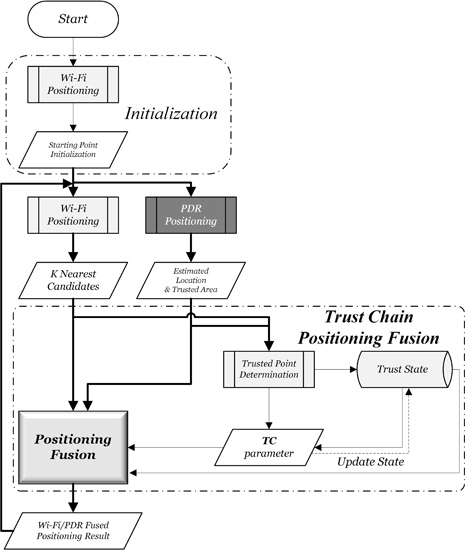An Indoor Continuous Positioning Algorithm on the Move by Fusing Sensors and Wi-Fi on Smartphones
Abstract
:1. Introduction
2. Related Work
| Advantages | Disadvantages | |
|---|---|---|
| Based on Particle Filter |
|
|
| Based on Kalman Filter |
|
|
| Cross-Assistive Approach |
|
|
3. An Improved Wi-Fi Positioning Algorithm
3.1. Properties of Wi-Fi Signals on the Move

- When the Wi-Fi signal quality is good (RSSI is stronger than −70 dBm), the refresh frequency is high, being maintained within 1 s (minimum is 0.667), and the “loss rate” is 0 without packet loss. In other words, at this time, the Wi-Fi signal is reliable.
- When the Wi-Fi signal quality is bad (RSSI is weaker than −80 dBm), the “refresh rate” quickly decreases and the “loss rate” quickly increases, nearly to zero, as the RSSI decreases. In other words, at this time, the Wi-Fi signal is unreliable.
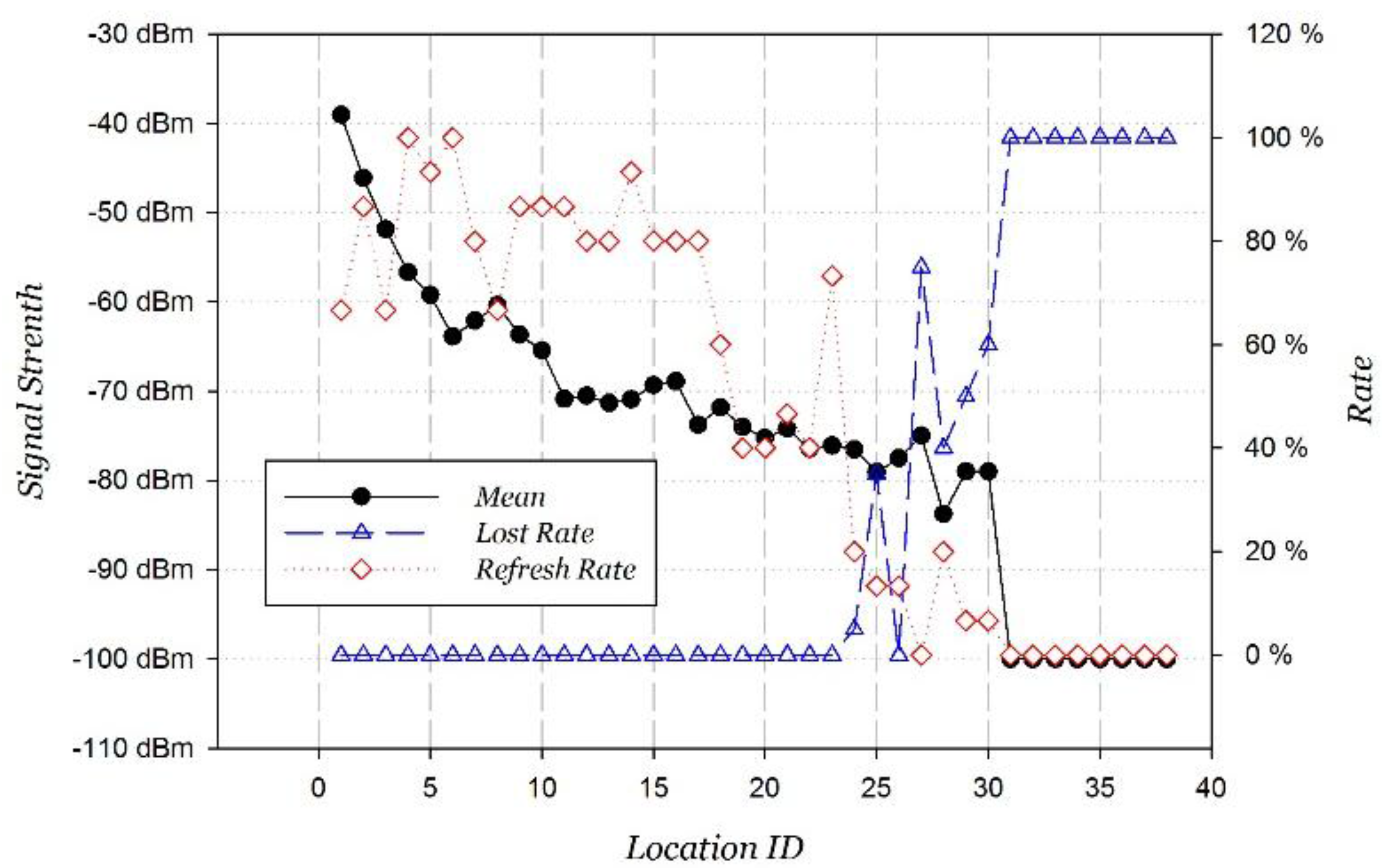
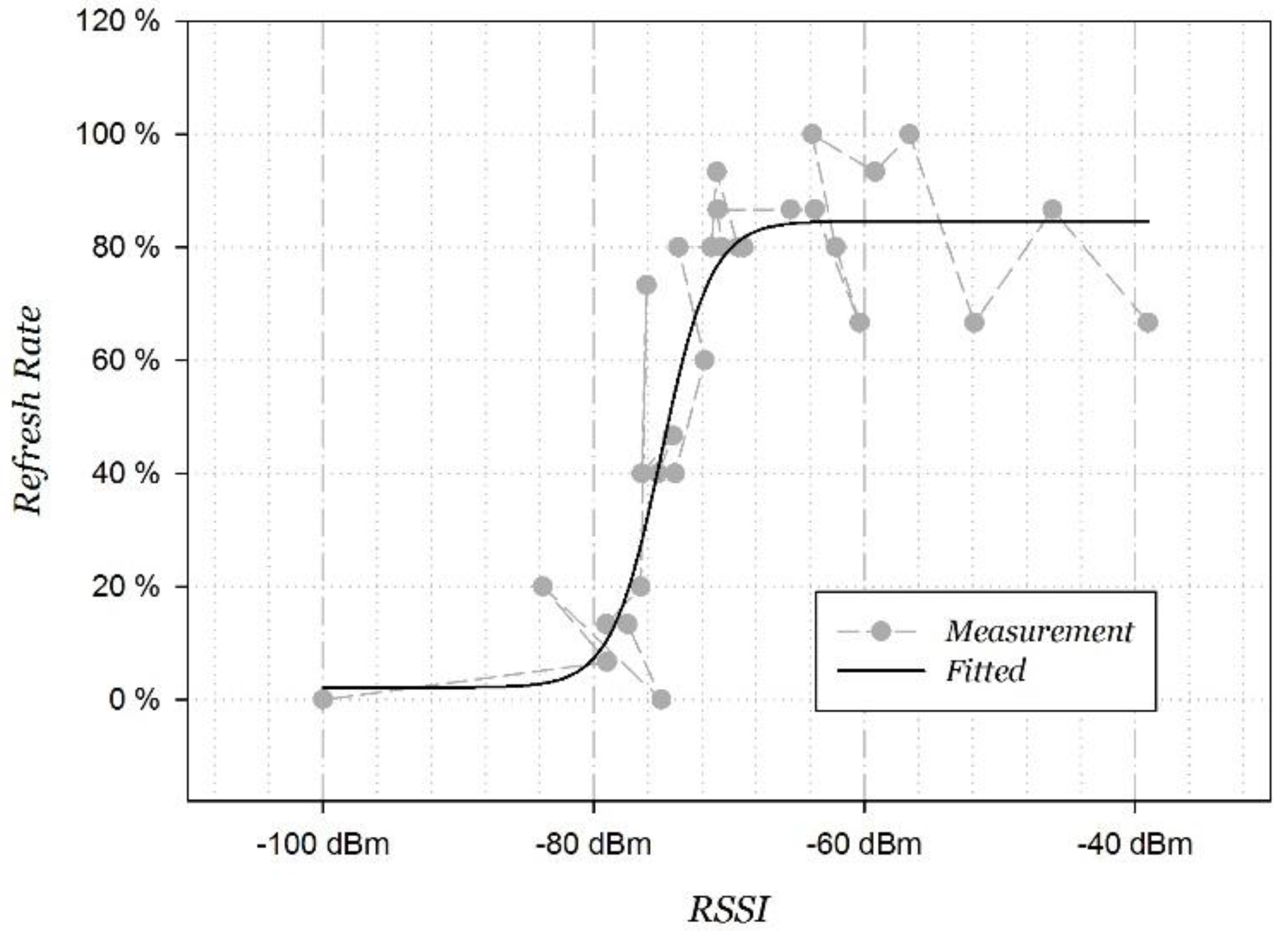
3.2. Algorithm Improvement
3.2.1. Dynamic Adjustment of RSSI Threshold
3.2.2. AP Match
4. Novel Fusing Positioning Algorithm
4.1. Algorithm Framework for Indoor Continuous Positioning on the Move
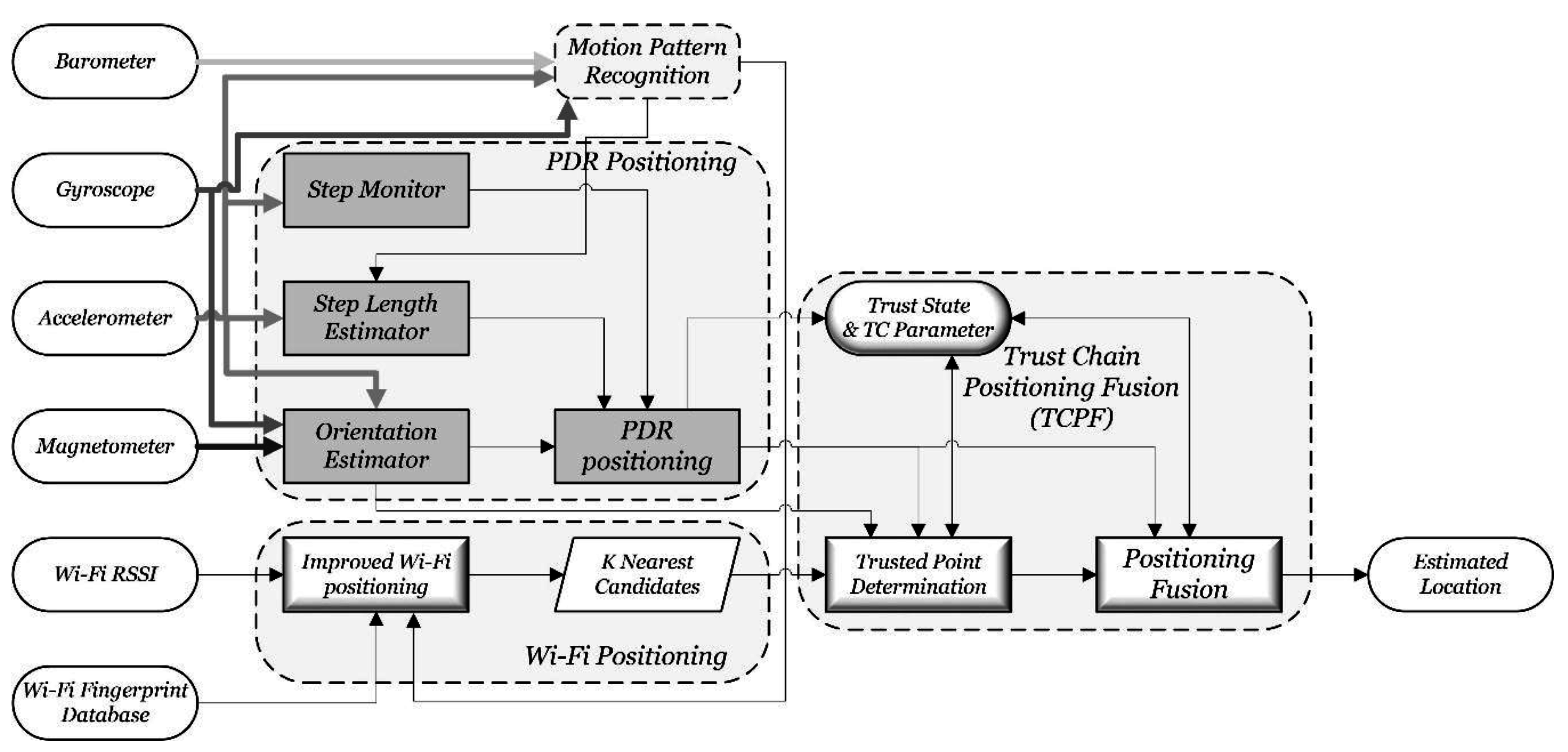
4.2. PDR Positioning Algorithm

4.3. Trust Chain Positioning Fusion Algorithm
4.3.1. Algorithm Flow
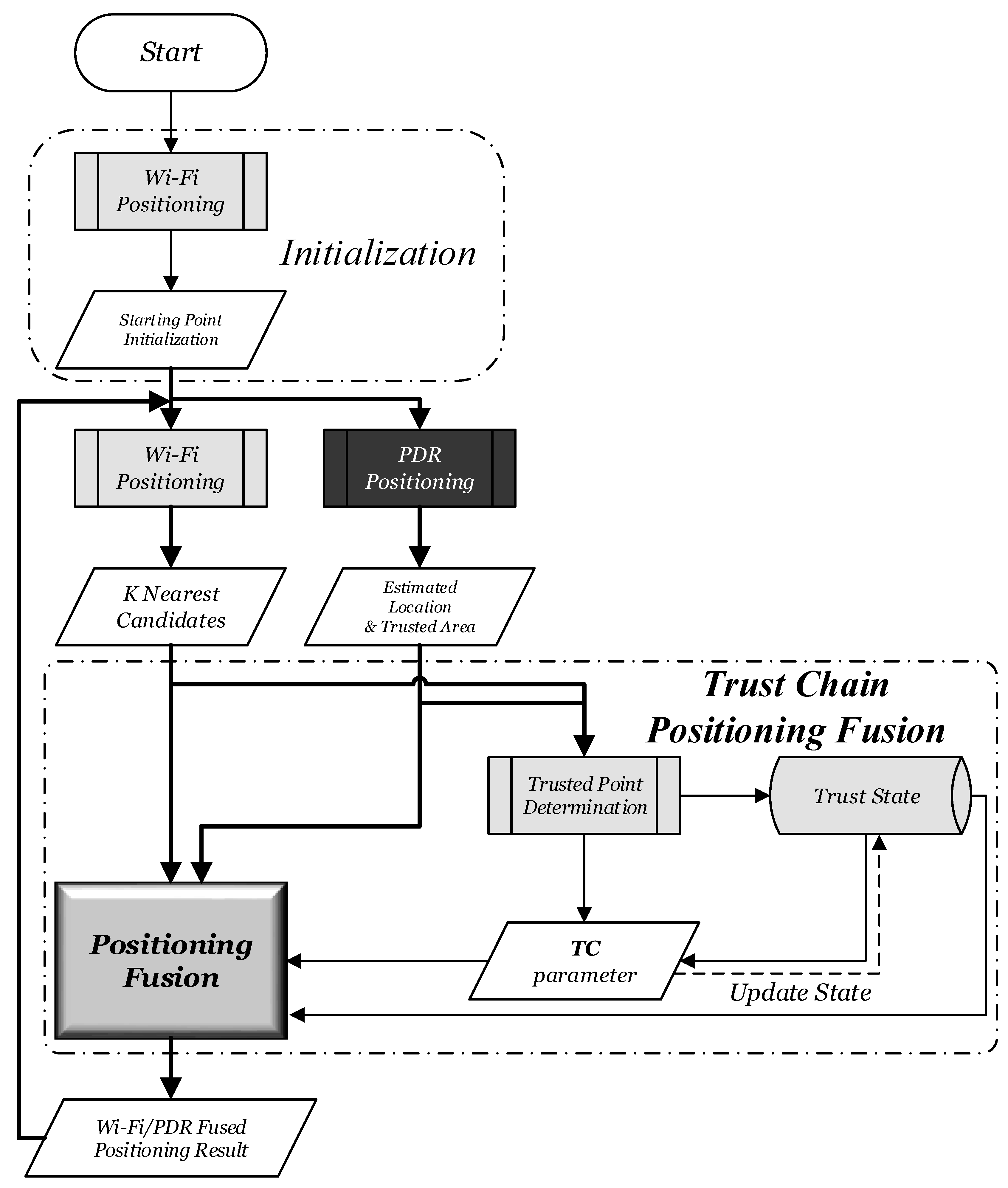
4.3.2. Trusted Point Determination
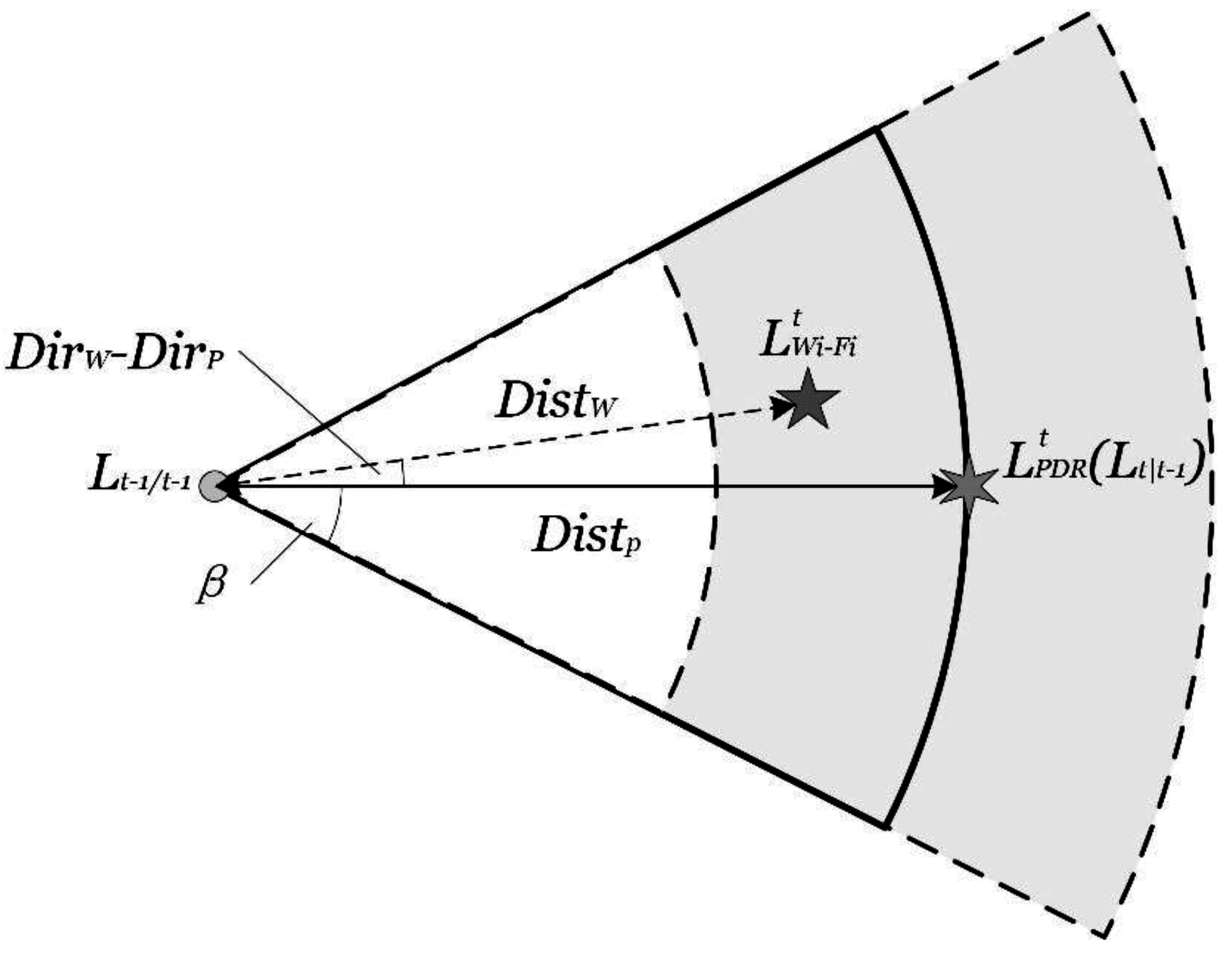
4.3.3. Trust State
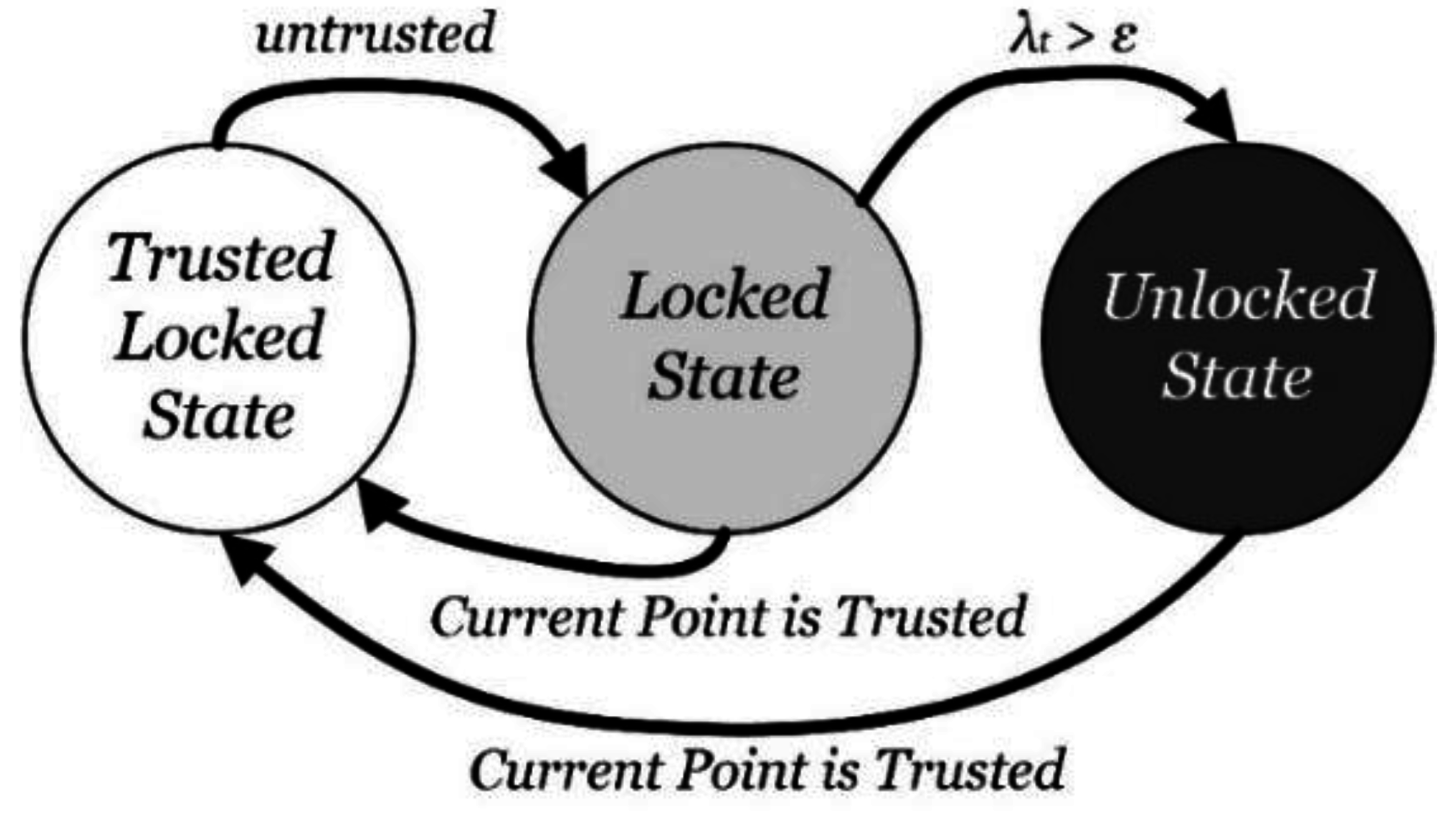
4.3.4. Positioning Fusion
- At the locked state, including Trusted Locked State and Locked State, the Wi-Fi positioning candidate points are limited within the trust area, and is the weighted sum of these selected points’ locations.
- At the Unlocked State, the Wi-Fi positioning is not filtered, and the candidate points are all weighted added as the positioning fusion estimation .
- The trusted point determination method and the trust state machine are established to multi-dimensionally adjust the weight of the dynamic positioning fusion so that the fused result is the optimal estimation.
- The algorithm has a strong anti-interference performance without error cycles. At the locked state, the TC parameter is set as a small value so that the fused positioning result is focused on the PDR positioning, which is highly accurate over a short distance. At the unlocked state, the TC parameter increases rapidly iteratively so that the fused positioning result is focused on the Wi-Fi positioning. The weight parameter is dynamically adjusted so that there is no error cycle.
5. Experimental Evaluation
5.1. Experimental Setup
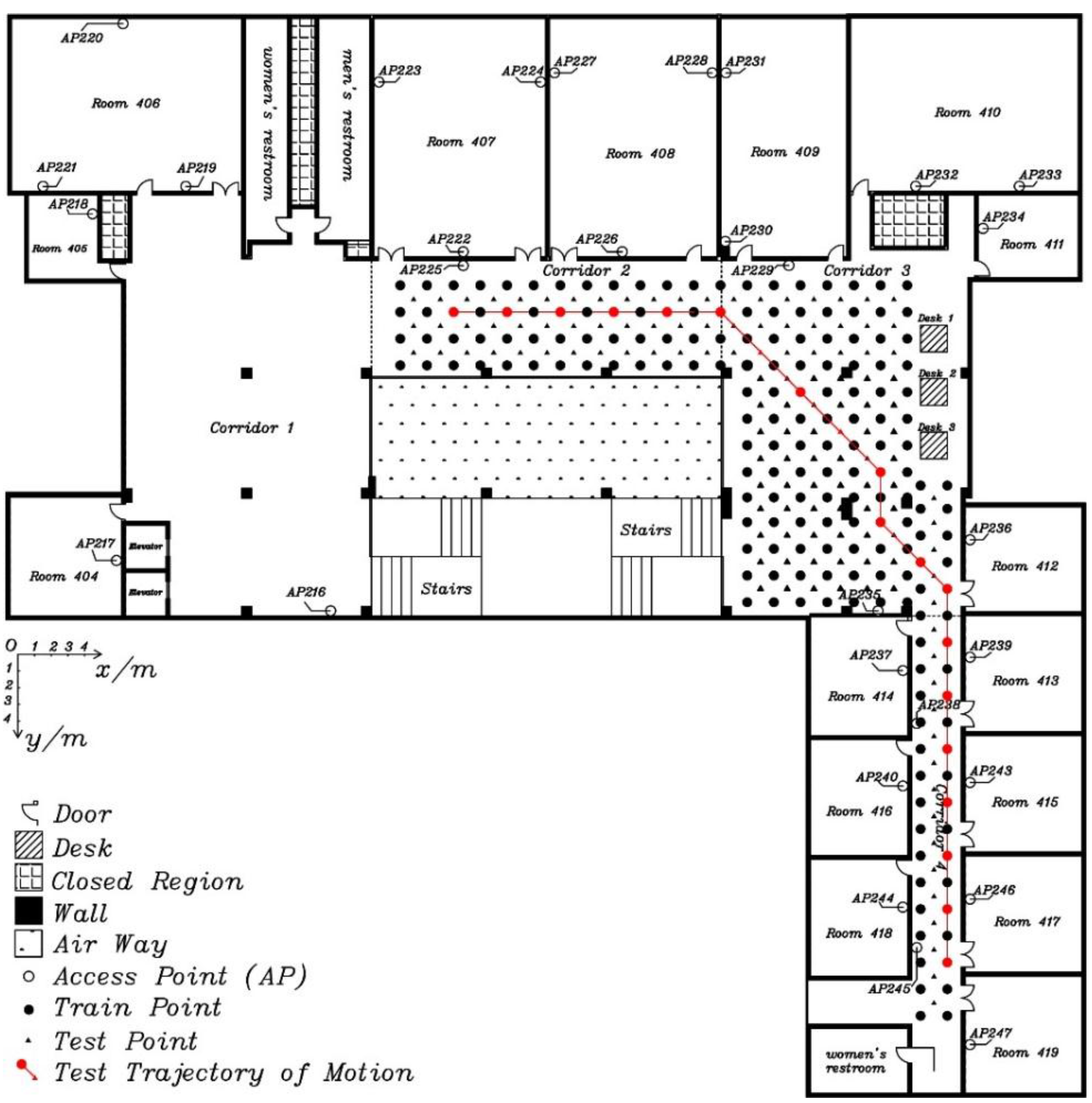

5.2. Improved Wi-Fi Positioning Evaluation
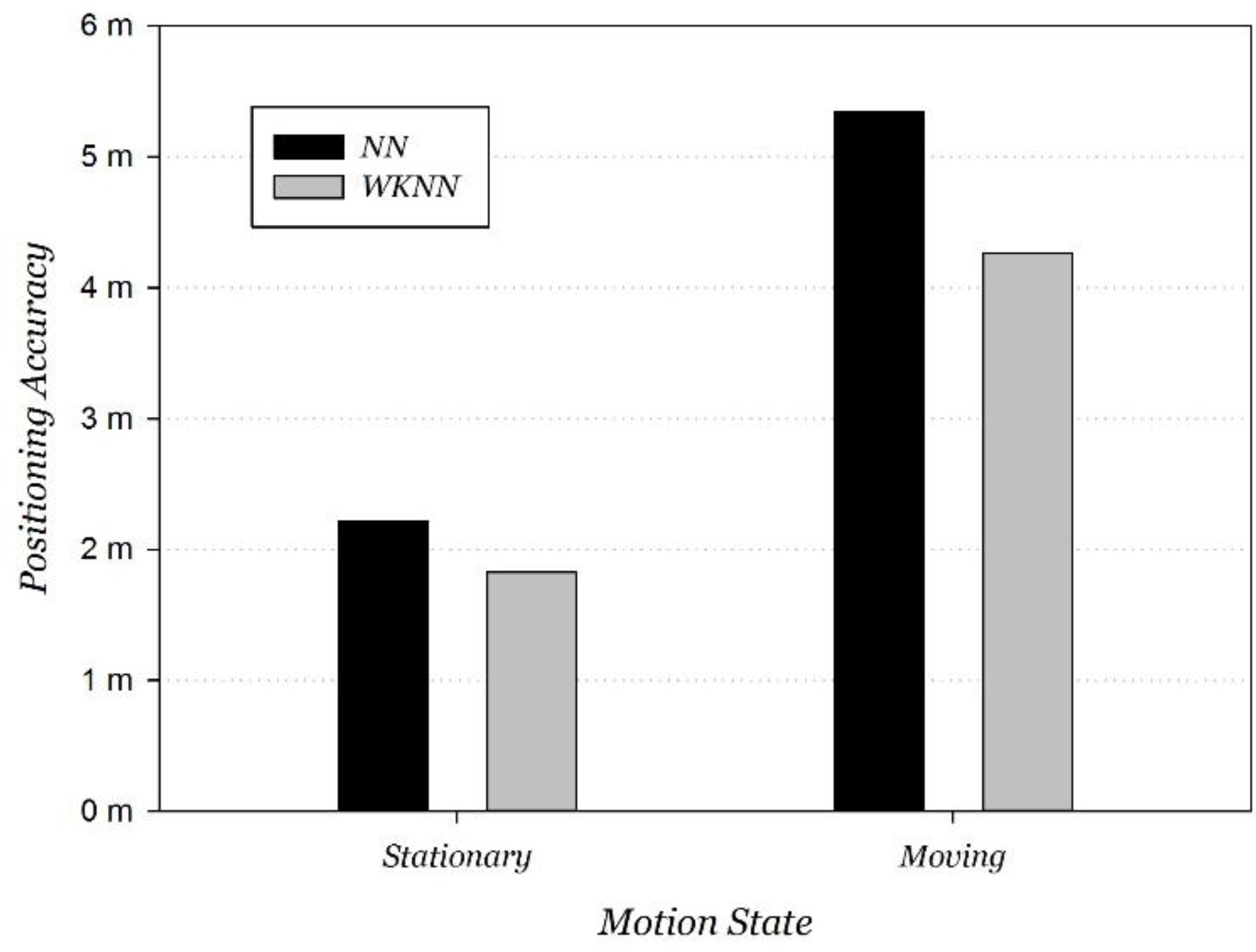
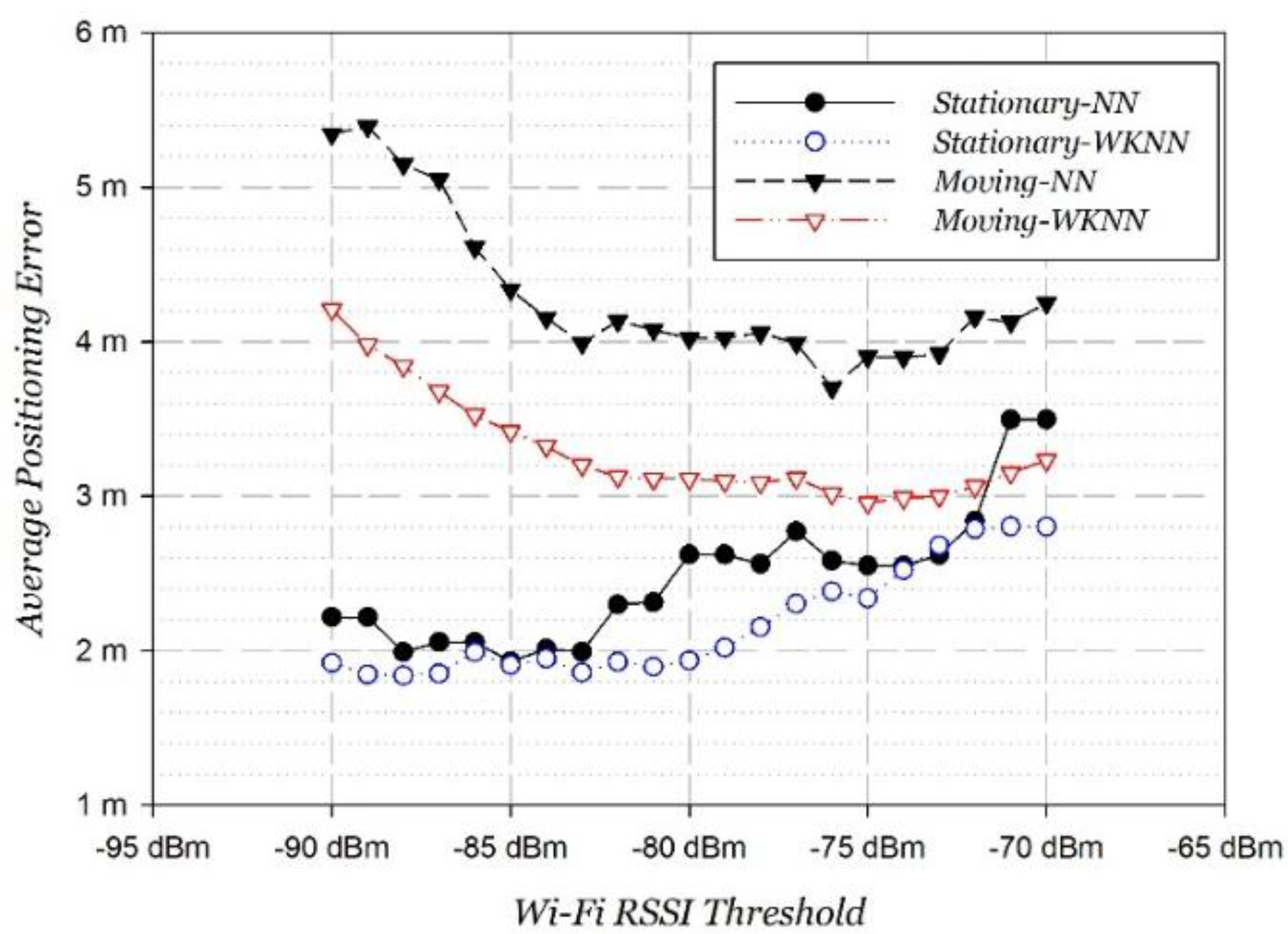
- For Wi-Fi stationary positioning, weak signals less than −75 dBm also contributed to positioning so that the excessive threshold reduced signal information and increased the positioning error. Overall, Wi-Fi static positioning achieved a strongest performance at around −85 dBm.
- For Wi-Fi moving positioning, the positioning error firstly decreased as the threshold increased, which was between −90 and −75 dBm. Then, as the threshold increased continuously, the positioning error increases instead. It can be explained that weak signals less than −75 dBm cause a decline in performance due to the great instability on the move. The best performance is obtained at around −75 dBm. This is in accordance with the properties of Wi-Fi signals on the move analyzed in Section 3.1.
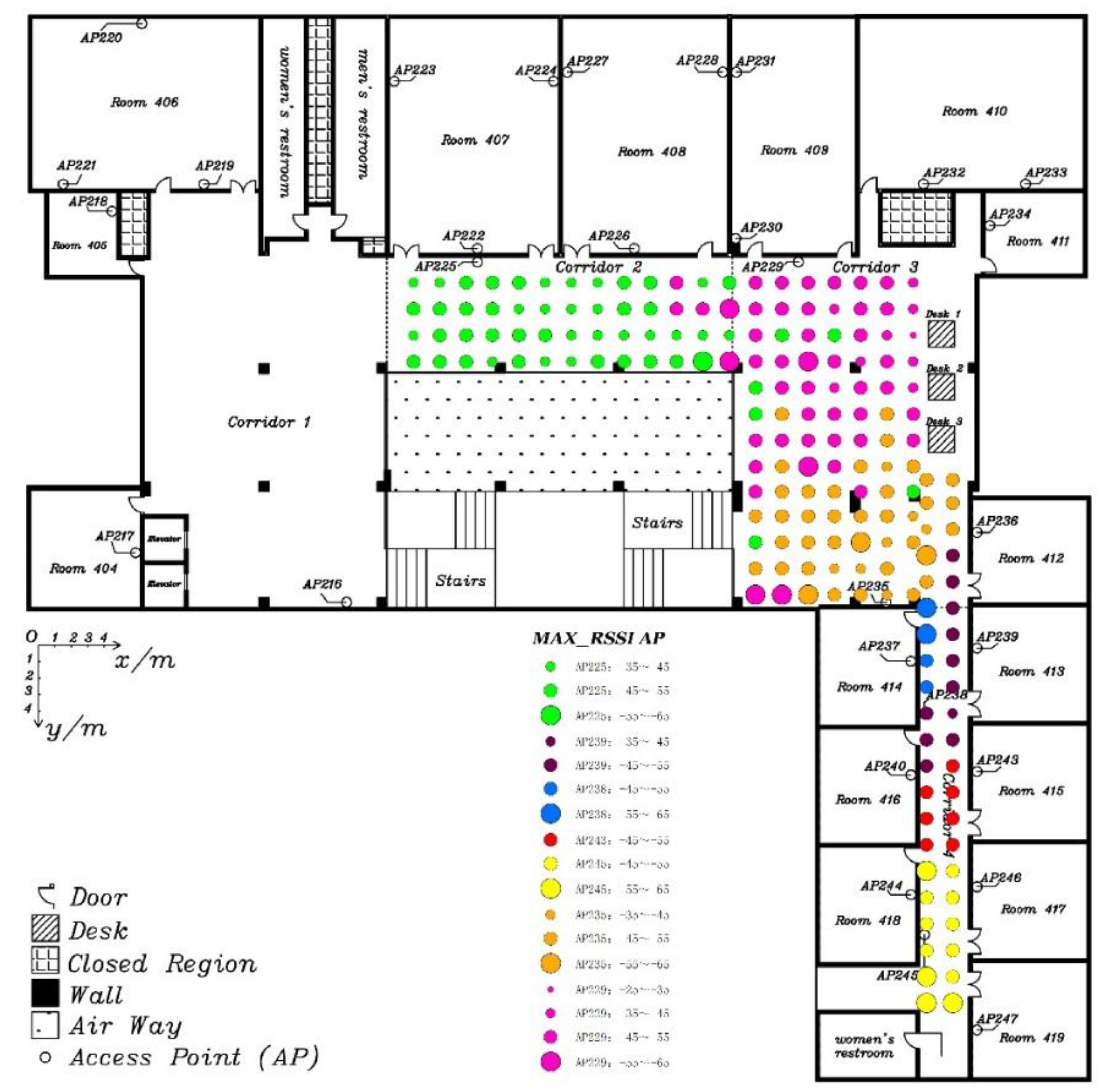

5.3. PDR Positioning Evaluation
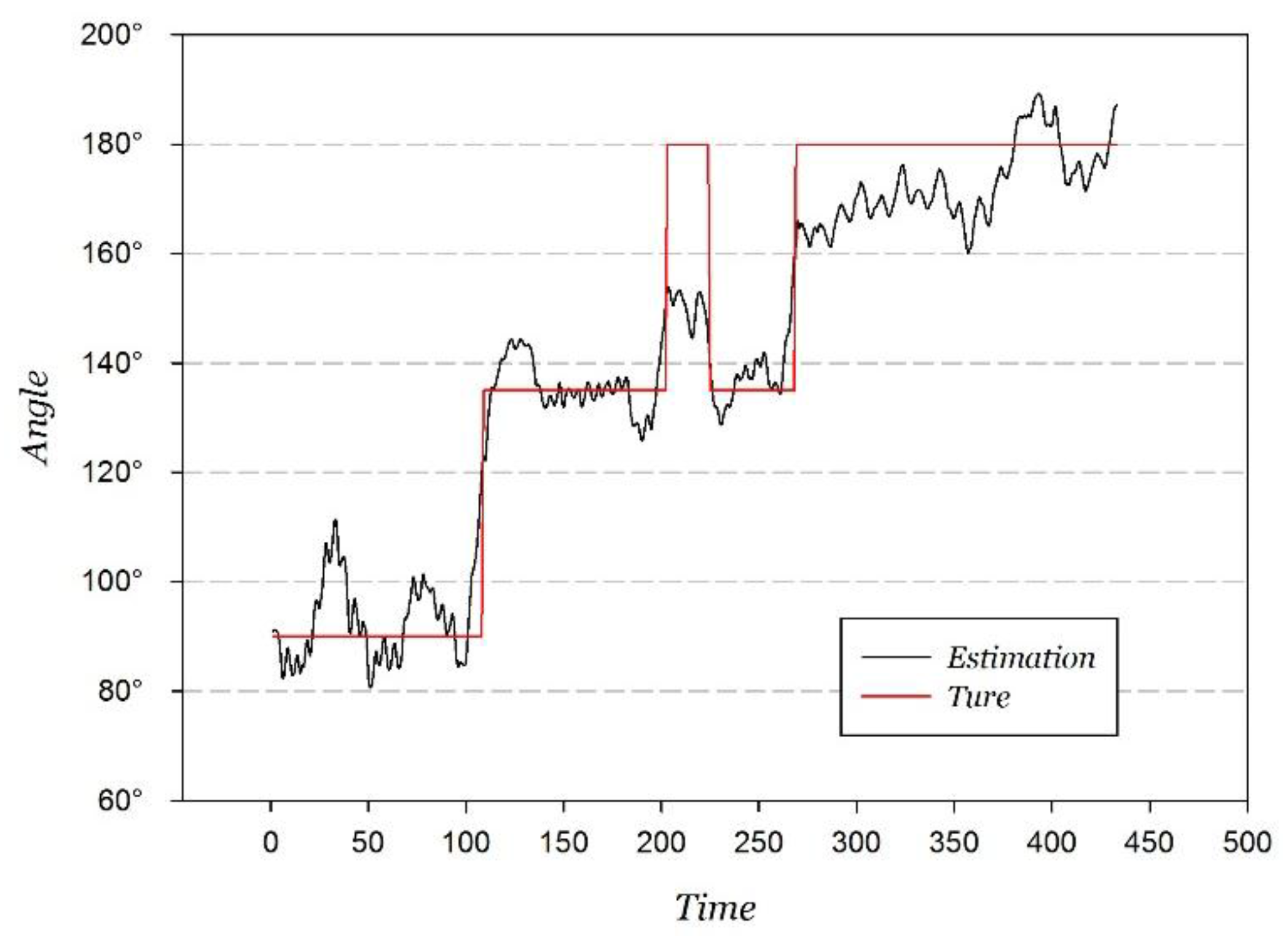
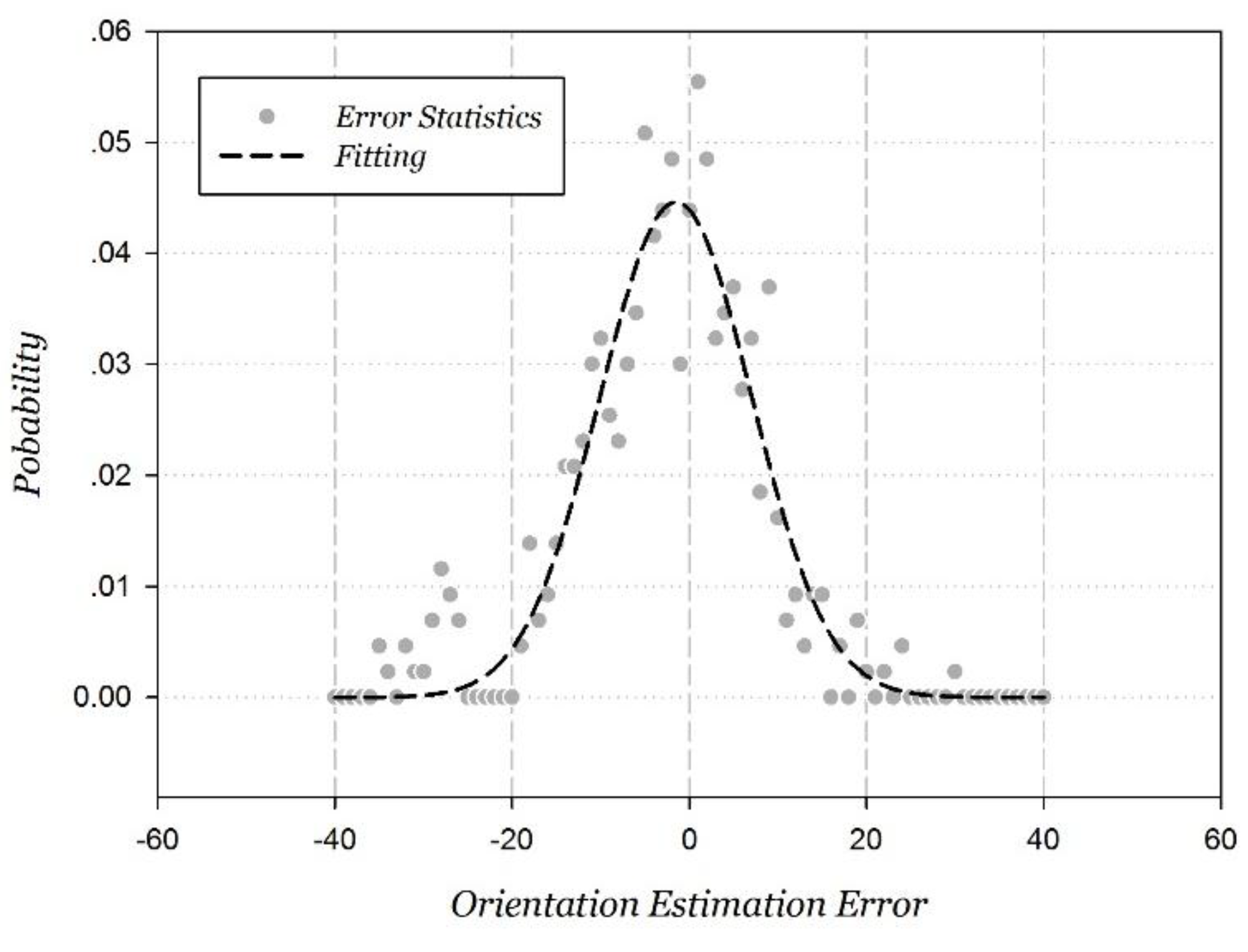

5.4. Fusing Positioning Evaluation


6. Conclusions and Future Work
Acknowledgments
Author Contributions
Conflicts of Interest
References
- MIIT National Remote Sensing Center of China. Precision Indoor and Outdoor Positioning and Navigation. Available online: http://www.nrscc.gov.cn/nrscc/upload/2015/826ab84c22044d999c522447d528b7bf1380438703328.pdf (accessed on 9 November 2015).
- Waqar, W.; Chen, Y.; Vardy, A. Incorporating user motion information for indoor smartphone positioning in sparse Wi-Fi environments. In Proceedings of the 17th ACM International Conference on Modeling, Analysis and Simulation of Wireless and Mobile Systems, Montreal, QC, Canada, 21–26 September 2014.
- Bahl, P.; Padmanabhan, V.N. RADAR: An in-building RF-based user location and tracking system. In Proceedings of the 19th Annual Joint Conference of the IEEE Computer and Communications Societies, Tel Aviv, Israel, 26–30 March 2000.
- Bahl, P.; Padmanabhan, V.N. Enhancements to the RADAR User Location and Tracking System. Available online: http://research.microsoft.com/apps/pubs/default.aspx?id=69861 (accessed on 9 November 2015).
- Roos, T.; Myllymäki, P.; Tirri, H.; Misikangas, P.; Sievänen, J. A probabilistic approach to Wlan user location estimation. Int. J. Wirel. Inf. Netw. 2002, 9, 155–164. [Google Scholar] [CrossRef]
- Xiang, Z.; Song, S.; Chen, J.; Wang, H.; Huang, J.; Gao, X. A wireless LAN-based indoor positioning technology. IBM J. Res. Dev. 2004, 48, 617–626. [Google Scholar] [CrossRef]
- Youssef, M.; Agrawala, A. The Horus WLAN location determination system. In Proceedings of the 3rd International Conference on Mobile Systems, Applications, and Services, Seattle, WA, USA, 6–8 June 2005.
- Wu, C.-L.; Fu, L.-C.; Lian, F.-L. WLAN location determination in e-home via support vector classification. In Proceedings of the 2004 IEEE International Conference on Networking, Sensing and Control, Taipei, Taiwan, 21–23 March 2004.
- Brunato, M.; Battiti, R. Statistical learning theory for location fingerprinting in wireless LANs. Comput. Netw. 2005, 47, 825–845. [Google Scholar] [CrossRef]
- Figuera, C.; Rojo-Alvarez, J.L.; Wilby, M.; Mora-Jiménez, I.; Caamaño, A.J. Advanced support vector machines for 802.11 indoor location. Signal Process. 2012, 92, 2126–2136. [Google Scholar] [CrossRef]
- Kakiuchi, N.; Kamijo, S. Pedestrian dead reckoning for mobile phones through walking and running mode recognition. In Proceedings of the 16th International IEEE Conference on Intelligent Transportation Systems: Intelligent Transportation Systems for All Modes, Hague, The Netherlands, 6–9 October 2013.
- Miyazaki, K.; Mochizuki, M.; Murao, K.; Nishio, N. Cross-assistive approach for PDR and Wi-Fi positioning. In Proceedings of the 2014 ACM International Joint Conference on Pervasive and Ubiquitous Computing, Seattle, WA, USA, 13–17 September 2014.
- Chang, Q.; Van de Velde, S.; Wang, W.; Li, Q.; Hou, H.; Heidi, S. Wi-Fi Fingerprint Positioning Updated by Pedestrian Dead Reckoning for Mobile Phone Indoor Localization. In Proceedings of the China Satellite Navigation Conference, Xi’an, China, 13–15 May 2015.
- Chu, H.-J.; Tsai, G.-J.; Chiang, K.-W.; Duong, T.-T. GPS/MEMS INS data fusion and map matching in urban areas. Sensors 2013, 13, 11280–11288. [Google Scholar] [CrossRef] [PubMed]
- Evennou, F.; Marx, F. Advanced integration of WiFi and inertial navigation systems for indoor mobile positioning. Eurasip J. Appl. Signal Process. 2006, 2006, 164. [Google Scholar] [CrossRef]
- Wang, H.; Lenz, H.; Szabo, A.; Bamberger, J.; Hanebeck, U.D. WLAN-Based Pedestrian Tracking Using Particle Filters and Low-Cost MEMS Sensors. In Proceedings of the Positioning, Navigation and Communication, Hannover, Germany, 22–22 March 2007.
- Chen, Z.; Zou, H.; Jiang, H.; Zhu, Q.; Soh, Y.C.; Xie, L. Fusion of WiFi, smartphone sensors and landmarks using the Kalman filter for indoor localization. Sensors 2015, 15, 715–732. [Google Scholar] [CrossRef] [PubMed]
- Deng, Z.-A.; Hu, Y.; Yu, J.; Na, Z. Extended Kalman Filter for Real Time Indoor Localization by Fusing WiFi and Smartphone Inertial Sensors. Micromachines 2015, 6, 523–543. [Google Scholar] [CrossRef]
- Yim, J.; Park, C.; Joo, J.; Jeong, S. Extended Kalman Filter for wireless LAN based indoor positioning. Decis. Support Syst. 2008, 45, 960–971. [Google Scholar] [CrossRef]
- Xiao, W.; Ni, W.; Yue, K.T. Integrated Wi-Fi fingerprinting and inertial sensing for indoor positioning. In Proceedings of the 2011 International Conference on Indoor Positioning and Indoor Navigation (IPIN), Guimaraes, Portugal, 21–23 September 2011.
- Panyov, A.A.; Golovan, A.A.; Smirnov, A.S. Indoor Positioning Using Wi-Fi Fingerprinting, Pedestrian Dead Reckoning and Aided INS. In Proceedigns of the 2014 International Symposium on Inertial Sensors and Systems, Laguna Beach, CA, USA, 25–26 February 2014.
- Malyavej, V.; Udomthanatheera, P. RSSI/IMU sensor fusion-based localization using unscented Kalman filter. In Proceedings of the 20th Asia-Pacific Conference on Communication, Pattaya City, Thailand, 1–3 October 2014.
- Yim, J.; Jeong, S.; Gwon, K.; Joo, J. Improvement of Kalman filters for WLAN based indoor tracking. Expert Syst. Appl. 2010, 37, 426–433. [Google Scholar] [CrossRef]
- Ali-Loytty, S.; Tommi, P.; Honkavirta, V.; Piche, R. Fingerprint Kalman Filter in indoor positioning applications. In Proceedings of the 2009 IEEE International Conference on Control Applications, Saint Petersburg, Russia, 8–10 July 2009.
- Jin, M.; Koo, B.; Lee, S.; Park, C.; Lee, M.J.; Kim, S. IMU-Assisted Nearest Neighbor Selection for Real-Time WiFi Fingerprinting Positioning. In Proceedings of the 2014 International Conference on Indoor Positioning and Indoor Navigation, Busan, Korea, 27–30 October 2014.
- Kaemarungsi, K.; Krishnamurthy, P. Analysis of WLAN’s received signal strength indication for indoor location fingerprinting. Pervasive Mob. Comput. 2012, 8, 292–316. [Google Scholar] [CrossRef]
- Luo, J.; Zhan, X. Characterization of Smart Phone Received Signal Strength Indication for WLAN Indoor Positioning Accuracy Improvement. J. Netw. 2014, 9, 739–746. [Google Scholar] [CrossRef]
- Huang, J.; Millman, D.; Quigley, M.; Stavens, D.; Thrun, S.; Aggarwal, A. Efficient, generalized indoor WiFi GraphSLAM. In Proceedings of the 2011 IEEE International Conference on Robotics and Automation (ICRA), Shanghai, China, 9–13 May 2011.
- Li, W.L.; Iltis, R.A.; Win, M.Z. A smartphone localization algorithm using RSSI and inertial sensor measurement fusion. In Proceedings of the 2013 IEEE Global Communications Conference (GLOBECOM), Atlanta, GA, USA, 9–13 December 2013.
- Pei, L.; Chen, R.; Liu, J.; Chen, W.; Kuusniemi, H.; Tenhunen, T.; Kröger, T.; Chen, T.; Leppäkoski, H.; Takala, J. Motion recognition assisted indoor wireless navigation on a mobile phone. In Proceedings of the 23rd International Technical Meeting of the Satellite Division of the Institute of Navigation 2010, Portland, OR, USA, 21–24 September 2010.
- Li, F.; Zhao, C.; Ding, G.; Gong, J.; Zhao, F. A Reliable and accurate indoor localization method using phone inertial sensors. In Proceedings of the 14th International Conference on Ubiquitous Computing, Pittsburgh, PA, USA, 5–8 September 2012.
- Sharp, I.; Yu, K. Sensor-based dead-reckoning for indoor positioning. Phys. Commun. 2014, 13, 4–16. [Google Scholar] [CrossRef]
- Hoseinitabatabaei, S.A.; Gluhak, A.; Tafazolli, R. Towards a position and orientation independent approach for pervasive observation of user direction with mobile phones. Pervasive Mob. Comput. 2015, 17, 23–42. [Google Scholar] [CrossRef]
© 2015 by the authors; licensee MDPI, Basel, Switzerland. This article is an open access article distributed under the terms and conditions of the Creative Commons by Attribution (CC-BY) license (http://creativecommons.org/licenses/by/4.0/).
Share and Cite
Li, H.; Chen, X.; Jing, G.; Wang, Y.; Cao, Y.; Li, F.; Zhang, X.; Xiao, H. An Indoor Continuous Positioning Algorithm on the Move by Fusing Sensors and Wi-Fi on Smartphones. Sensors 2015, 15, 31244-31267. https://doi.org/10.3390/s151229850
Li H, Chen X, Jing G, Wang Y, Cao Y, Li F, Zhang X, Xiao H. An Indoor Continuous Positioning Algorithm on the Move by Fusing Sensors and Wi-Fi on Smartphones. Sensors. 2015; 15(12):31244-31267. https://doi.org/10.3390/s151229850
Chicago/Turabian StyleLi, Huaiyu, Xiuwan Chen, Guifei Jing, Yuan Wang, Yanfeng Cao, Fei Li, Xinlong Zhang, and Han Xiao. 2015. "An Indoor Continuous Positioning Algorithm on the Move by Fusing Sensors and Wi-Fi on Smartphones" Sensors 15, no. 12: 31244-31267. https://doi.org/10.3390/s151229850




